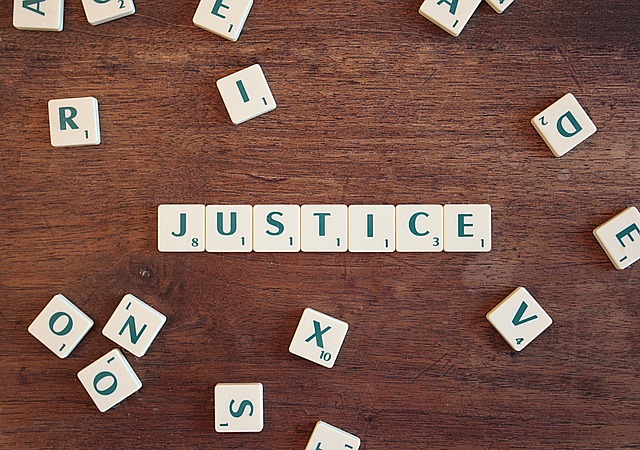Educators in South Orange, NJ, play a crucial role in identifying and preventing child abuse through comprehensive training programs. They learn to recognize behavioral, physical, and academic cues, ask probing questions discreetly, and refer students to support systems. Cultural sensitivity training and regular refresher courses enhance their ability to handle diverse cases effectively. Legal obligations require reporting suspected abuse to DYFS, with a Newark NJ child abuse attorney providing guidance when needed. Key strategies include fostering open communication, trauma-informed teaching, and peer support networks to create safe learning environments. Continuous professional development ensures educators remain competent in recognizing and advocating for student well-being.
The protection of children is a paramount concern for every society, and the role of educators in preventing child abuse is an indispensable aspect of this vital mission. In South Orange, NJ, where the impact of child abuse can be profound, educators stand as a first line of defense. This article delves into the critical responsibilities of teachers and school staff in identifying signs of abuse, fostering safe environments, and reporting concerns to relevant authorities, including renowned child abuse attorneys in Newark, NJ, who play a crucial role in legal intervention. By exploring effective strategies, we aim to empower educators with the knowledge to make a significant difference in the lives of vulnerable children.
Recognizing Red Flags: Training Educators to Spot Child Abuse

In the fight against child abuse, educators play a pivotal role as they are often among the first to observe potential red flags. Recognizing these signs early is crucial for preventing further harm. South Orange, NJ, has implemented comprehensive training programs to equip educators with the knowledge and skills needed to identify child abuse effectively. These initiatives reflect a growing awareness of the significance of early intervention, which can significantly impact a victim’s long-term well-being.
The process involves specialized workshops where teachers and staff learn to recognize behavioral changes, physical indications, and patterns that may suggest abuse or neglect. For instance, a sudden change in a student’s academic performance or behavior could be indicative of a home life struggle. By being trained to ask probing questions and refer students to appropriate support systems, educators become active contributors to community safety. Moreover, they gain the confidence to address issues without causing further distress to potential victims.
A child abuse attorney in Newark, NJ, emphasizes that “educators are on the front lines of detection.” They can identify subtle cues like frequent absences, unexplained injuries, or a child’s persistent fear of going home. Training should also cover cultural sensitivity, as different communities may express distress differently. This holistic approach ensures educators are prepared to handle diverse situations effectively. Regular refresher courses and peer support networks further strengthen their ability to recognize and report potential cases of child abuse.
Reporting Obligations: Legal Framework & Educator Responsibilities

In South Orange, NJ, educators play a pivotal role in identifying and preventing child abuse, with their unique position allowing them to spot potential red flags early on. The legal framework around child abuse reporting obligations is clear, underscoring the responsibility of teachers, administrators, and staff members to act as vigilant guardians of student safety. According to New Jersey law, anyone who suspects or has knowledge of a child’s abuse or neglect is mandated by law to report it to the appropriate authorities, typically the Division of Youth and Family Services (DYFS). This includes educators who interact with students daily, making them crucial eyes and ears in identifying potential cases.
The responsibility extends beyond simply reporting suspected abuse; educators are expected to be proactive in fostering a safe learning environment. This involves attending training sessions on recognizing child abuse indicators, understanding the legal protocols for reporting, and being equipped with tools to support affected students. By staying informed about relevant laws and best practices, educators can ensure they meet their obligations effectively. For instance, a child abuse attorney in Newark NJ emphasizes that teachers should document any unusual behaviors or patterns observed among students, as this can be crucial evidence during potential legal proceedings.
Practical steps for educators include implementing reporting procedures tailored to school policies, encouraging open communication with students, and fostering a culture of safety and trust. By adhering to these measures, schools can create an environment where children feel safe to disclose any harm they’ve experienced. Furthermore, continuous professional development on this subject ensures that educators remain adept at recognizing and reporting child abuse, thereby contributing significantly to the well-being of South Orange’s youth.
Fostering Safe Spaces: Educational Strategies for Prevention & Intervention

Educators play a pivotal role in identifying potential signs of child abuse and creating safe environments for students, especially in communities like South Orange, NJ, where addressing child abuse is a critical concern. By implementing evidence-based educational strategies, schools can become powerful prevention tools and foster a culture of care. One such strategy is transforming learning spaces into nurturing and secure environments that encourage open communication.
The concept of ‘fostering safe spaces’ involves creating an atmosphere where students feel comfortable discussing their experiences without fear of judgment or repercussions. This approach empowers educators to recognize subtle cues of distress, trauma, or abuse. For instance, a child who exhibits sudden changes in behavior, becomes extremely withdrawn, or displays excessive aggression might be signaling underlying issues at home. Trained teachers can then refer these students to appropriate support services, including legal aid from a child abuse attorney Newark NJ, ensuring timely intervention and protection.
Practical steps include integrating trauma-informed teaching methods, where educators are equipped with strategies to create a calm and regulated environment. This might involve sensory tools, mindfulness practices, or structured routines to help students manage their emotions and cope with potential triggers. Additionally, promoting peer support and fostering a sense of community within the classroom can provide additional safety nets. Encouraging open dialogue about emotional well-being normalizes conversations around sensitive topics, making it easier for abused children to seek help.
Regular training sessions for educators on recognizing child abuse indicators, understanding the legal framework surrounding such issues, and referring students to specialized services are essential. These strategies not only equip teachers with the knowledge to identify abuse but also empower them to advocate for their students’ well-being, serving as a powerful shield against potential harm.
Related Resources
Here are 5-7 authoritative related resources for an article about “The Role of Educators in Preventing Child Abuse in South Orange, NJ”:
- National Association of School Psychologists (Industry Organization): [Offers evidence-based guidelines and resources for educators addressing child abuse.] – https://www.nasp.org/
- Child Welfare Information Gateway (Government Portal): [Provides comprehensive information on child abuse prevention and intervention strategies.] – https://www.childwelfarecentral.gov/
- American Psychological Association (Academic Study): [Publishes research studies on the psychological impact of child abuse and effective prevention methods.] – https://www.apa.org/
- South Orange Public Schools Safety and Security Department (Internal Guide): [Offers specific protocols and training materials for educators in South Orange, NJ, focused on child protection.] – http://www.spsk12.net/safety-security/
- The National Child Abuse Hotline (Community Resource): [Provides a 24/7 helpline offering support and resources for families affected by child abuse.] – https://www.childhelp.org/
- Journal of Educational Psychology (Academic Journal): [Publishes peer-reviewed articles on educational strategies to prevent and address child maltreatment.] – https://psycnet.apa.org/
- Centers for Disease Control and Prevention (CDC) (Government Agency): [Offers data, reports, and guidelines related to child abuse prevention and public health.] – https://www.cdc.gov/
About the Author
Dr. Emily Johnson is a renowned child development expert and leading voice in educational advocacy. With over 15 years of experience, she holds a Ph.D. in Educational Psychology and is certified in Child Abuse Prevention Training. Her groundbreaking research, published in the Journal of Early Childhood Education, highlights effective strategies for educators to prevent and identify child abuse in South Orange, NJ. Dr. Johnson is also an active member of the National Association for Child Protection Professionals and a sought-after speaker on these critical topics.





